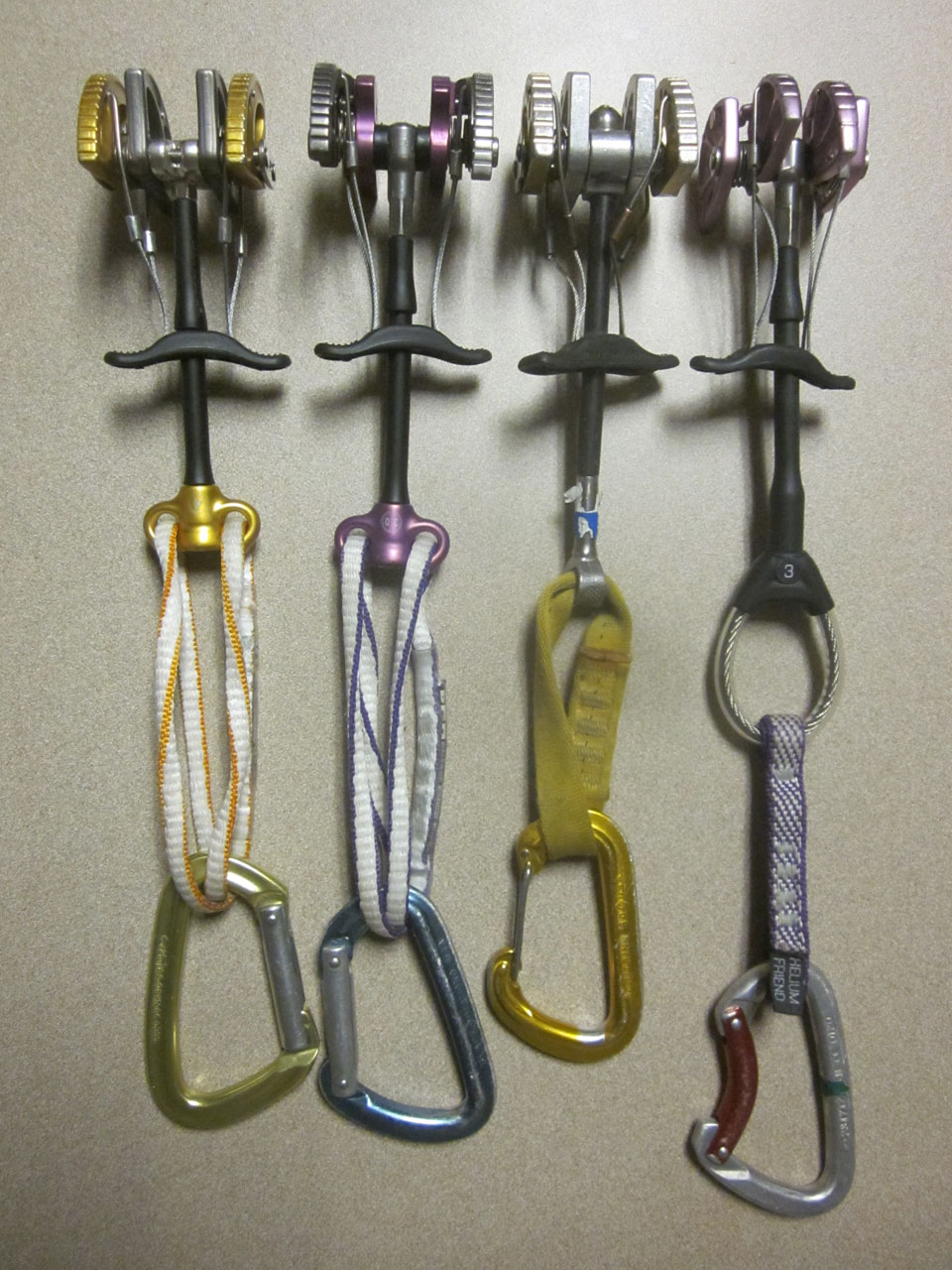Stem
With the stem design, DMM doubled down on the design that they introduced with the Dragon. The stem is shorter than other single-stem cams (comparable to, say, a TCU), and DMM eschews a thumb loop in favor of a dual-length extendable sling. Those familiar with Dragons will find the design to be the same as on both cam lines. If Black Diamond covers the entirety of your cam experience, this will be where the biggest difference is noticed.
A more detailed discussion of the pros and cons of this setup can be found in BLISTER’s DMM Dragon Cam review, but the tradeoff can be summarized as an exchange between a thumb loop (now ubiquitous on single-stem cams), and an extendable sling. I learned to place gear on the old style (i.e. pre-C4) Camalots, among other cams, and when I first came across a thumb loop, I thought I’d never go without one again. The cams are simply easier to place and more stable in my hand with a thump loop. But DMM re-opened this issue for me by trading for the extendable sling.

The sling, when doubled over, is roughly the same length as every other cam I’ve ever used (adding roughly 13cm to the stem of the cam). Rather than being one single piece of webbing, however, these slings are doubled over and function like alpine draws: you can clip them short or double the length in a pinch. This helps minimize drag and prevents walking; having that capability built into the cam is hard to argue with.
The shorter stem is another subtle aspect to the Demon cam. It is only about half an inch shorter than Black Diamond cams, and just under an inch shorter than Helium Friends, but nonetheless I found it to be noticeable when using the cams. The shorter stem (which is actually slightly longer than the one on the number four Dragon) is, in my opinion, a miss-step on DMM’s part. It is true that shorter stems act as shorter levers and thus exert less force on a cam placement due to rope movement, but this hardly seems worth the loss of reach.
I found this to be inconvenient not as often when placing the cams (how often are you placing gear at the absolute limit of your reach?) as when retrieving them. The shorter the base of the stem is, the less you have to work with when trying to get it back. This is a nit-picky point because the difference in length is relatively small: I never got the Demon stuck or had serious trouble retrieving it, but it did cross my mind while digging one out of an anchor placement, so I thought it deserved mention.

This is a great review. I just randomly stumbled across it. One of the best I’ve read.
Thanks,